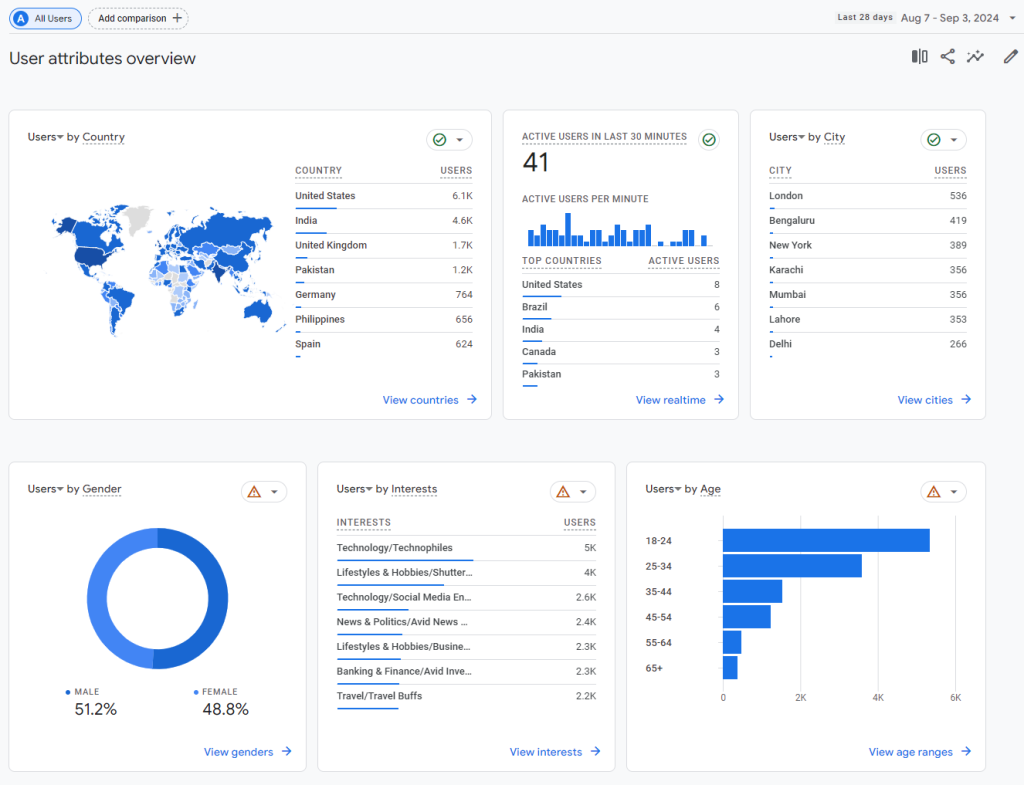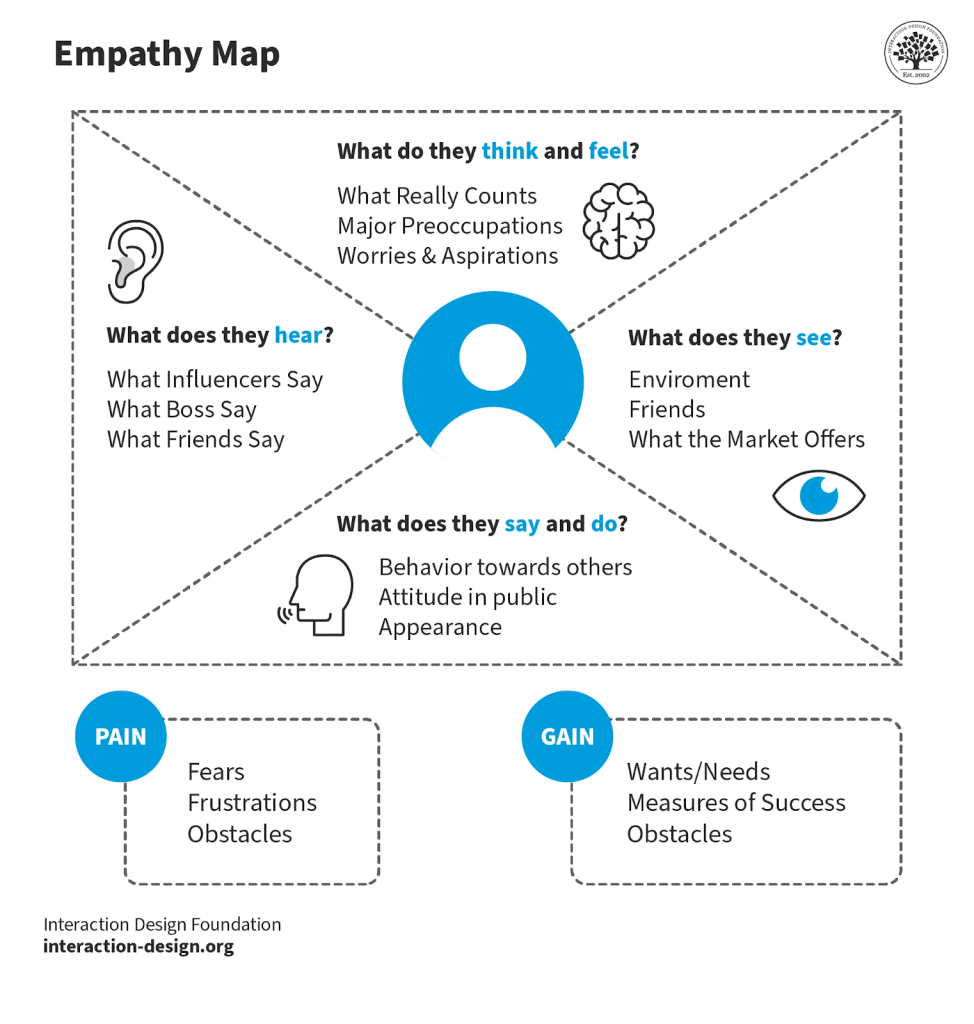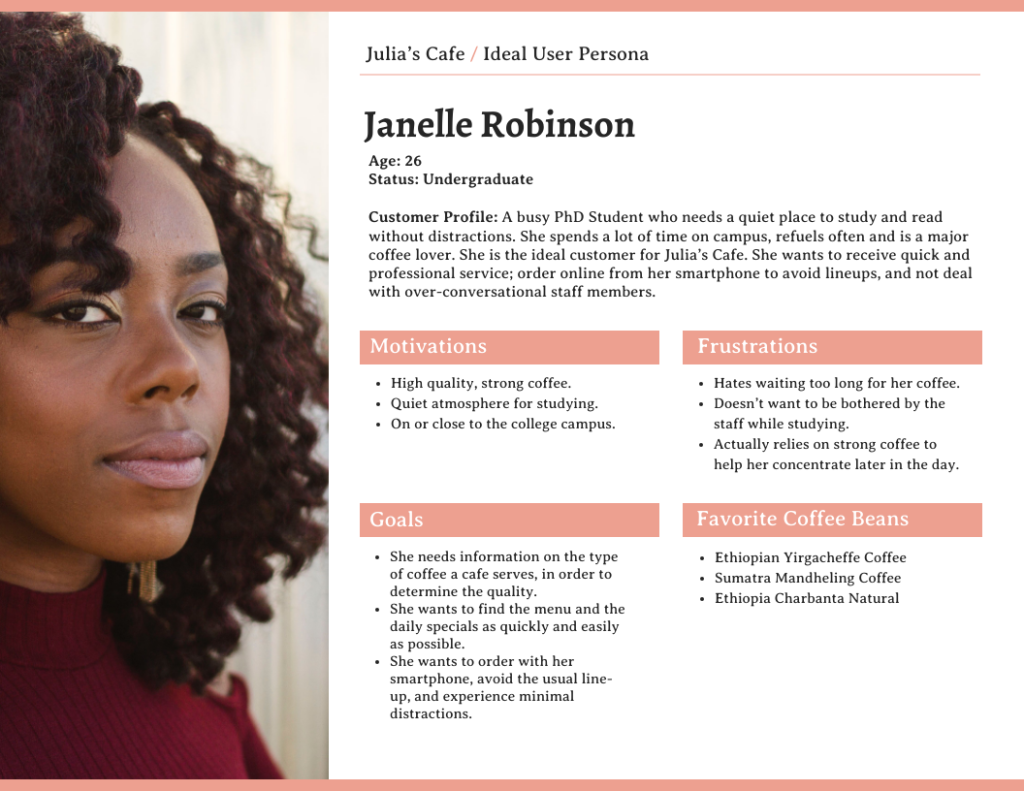User Personas for SEO: How They Can Lead to More Growth
Key Takeaways
- User personas help in empathizing and connecting with users by representing their demographics, pain points, goals, motivations, and skills.
- Creating user personas based on qualitative insights from interviews helps in developing products that align with user needs and motivations.
- Understanding user personas guides product prioritization in design and marketing strategies by aligning with user behavior and language used in searches.
Alan Cooper, a software developer and consultant for early tech companies, coined the term “user persona” in the early 1980s. He found that early design practices relied on generalizations and assumptions about users. He needed to empathize and connect with them by creating a persona that represents who they are, their pain points, goals, motivations, and skills so he could build products that meet their needs.
Cooper interviewed 7-8 users the first time he did this. His approach was largely qualitative because he needed to know their needs, motivations, and behavior so he could
- Create user personas that represent their experiences
- Create a product they “will” use
This means that your product (or service) ideation processes (and, by extension, marketing strategies) should be designed based on something other than assumptions about your ideal customer. You need to understand them by conducting qualitative and quantitative analyses of your existing or potential user base.
What is a user persona?
A user persona describes your ideal customer. It’s a short but descriptive biography about the potential users of a website, product, or service business.
It represents your ideal customers, with insights into their demographics, backgrounds, and behavior. You can learn these through interviews, surveys, and observations.
Understanding who they are guides which product (or service) you prioritize in your design and how you market your business to them. In a podcast, marketing expert Tas Bober mentioned that a company called (and marketed) itself “security questionnaire automation software.” But users don’t know them as that. When they search for them, they use keywords like “vendor risk assessment software,” which has a search volume that is four times higher than “security questionnaire…”. The same product, the same target audience, different keywords.
Without research (where you speak to customers), you won’t know how they use your product (or why they need your services) or their essential features.
By extension, you won’t know how to market it to potential users who need your solutions and haven’t yet discovered you.
So, an easy way to treat your audience as real people with pain points in your product/service is by truly understanding who they are.
What is the Structure of a User Persona Like?
Many people say a user persona is a fictional name of a person. At HigherVisibility, we conduct deep research and value a user persona that is a semi-fictional identity of your ideal customers. It could be;
- a short bio on who they are,
- what they’re looking for in a product/service like yours,
- how they found you,
- what they were using before they found you (or how they were coping with their previous solution before you), and
- what they love most about your product/service.
Your user personas for SEO should describe the following:
- Their typical age, gender, location, education, and income level (i.e. demographics).
- Their job role, career path, and personal interests/typical goals (i.e., background).
- What they want to achieve when using your product or patronizing your service (ease, satisfaction, and other feelings that capture the goals that fuel their pain points).
- Their pain points. The challenges or frustrations they face without your product/service.
- How they interact with your product or service (i.e., their behavior towards your solution.
While user personas for SEO are more nuanced than this, the structure above captures how they should be written.
However, remember that user personas are not buyer personas. Buyer personas are the decision makers who decide which product the ideal customer buys/uses, especially in B2B SaaS, where the user doesn’t have the final say on what is paid for. You can create a separate buyer persona or integrate statements & strategies that help capture their interest to show the value of your product/service versus competitors’.
How to Create User Personas for SEO
Now that you know what a user persona is and how it is structured, how do you create one for SEO?
You could easily set off to conduct market research, but that would only result in many loose ends. Let me explain.
Without a clear focus on who your product/service is for and their pain points, you might get overwhelmed by the volume of data from market research with no clear direction on how to use it for SEO.
A more targeted approach is starting your search armed with the answers to these questions:
- Who is my ideal user?
- What are the goals and challenges of my users?
- How do they search for solutions to their problems or information to achieve their goals?
- How important are these goals (or problems) to them?
- What kind of solution are they looking for?
These questions will help you know what to focus on during your research.
1. Conduct market research
In this step, gather enough data on your customers to create an ideal user persona. Start with your current paying customers to find similarities in their purchase (or search behavior). If you’re newly starting your business, you can interview your prospective customers (people in the industry) to learn about their concerns, interests, pain points, and needs. There are two main ways to approach this:
- Quantitative data:
This is an objective method of collecting customer data. It requires analyzing numerical data to answer questions like “who,” “what,” and “how many/often.”
If you already have a website for your product/service, you can get this data from Google Analytics, Search Console, and CRM (customer relationship management) software like HubSpot, Hotjar, etc. These tools have unique features for gaining insights into your existing customer base.
Using Google Analytics for customer research:
Google Analytics has a “User Explorer” feature that gives insights into your customer journey. With this, you can analyze user behavior on your website, understand how they interact with each page, and see their demographic data, where they’re coming from (search engines, social media, or referrals), the pages they visit, the time spent on each page, and their interests.

Using Google Search Console for customer research:
Search Console gives you insights into your website performance, the top search queries you appear for, and your high-value pages (in descending order). Although it doesn’t necessarily give you information on your users, you’ll know the exact search queries they use to find you online (which shows their intent).

Using surveys to gather data on your customers:
You can also use survey forms to know what product/service is popular among your customers, how they find you online and what drives them to make a purchase. The best part is this can be done remotely and spread among diverse segments of your target audience. For context, you can use survey forms to ask questions like:
- What product/service do you like the most?
- How often do you shop for products/service?
- Do you prefer [variant A] or [variant B]?
- How much do you budget for product/service?
- Based on your experience with our brand, how likely are you to recommend us to others?
You can analyze the answers to these questions to draw out patterns common to your current customers. For example, if you have more votes in favor of variant B instead of A (from question c), you can focus on promoting variant B on your homepage since it aligns with your customer’s preferences.
This strategy also works if you’re releasing a new product/service and need to find trends your (potential) customers are interested in. Here, you can distribute surveys/polls on social media to collect data from people who have shown interest in a product/service similar to yours. From this data, you can find a gap in your market to serve customers better and gain a competitive advantage.
For context, ask questions like:
- How often do you buy products/service? This tells you what to focus on your better customer experience
- Which of the following products/services would you consider buying?
- What do you think about this product/service?
- Which features are most important to you when considering buying product/service?
You can make the question d a multi-choice question to allow users to choose more than one answer. I found this helpful guide, which lists different survey question types and examples for gathering quantitative data. Check it out here.
- Qualitative data:
Qualitative data lets you go deeper into your customer’s personality to understand their goals, pain points, hopes and motivations. Oftentimes, this requires direct interaction with them. You can get qualitative data in different ways, including:
- Conducting one-on-one interviews
- Discussions during focus groups, etc.
- Conducting surveys with open-ended questions
- Getting quotes from users
- Analyzing customer reviews, including the negatives
Hotjar has a customer data-gathering feature that enables you to create and embed survey forms directly to your website. You can ask questions like:
- Describe yourself in a sentence
- What is the size of your company?
- What is your role in the company?
- What is the main goal you wanted to achieve on our site today (this uncovers the intent)
- What’s the biggest challenge you face when [add use case]?
You can use Zoom or Hotjar Engage to conduct remote interviews with customers.
It’s easier to offer the right solutions when you deeply understand their needs/concerns. When collecting customer data, always inject the human element into your process. Instead of throwing straightforward questions at them, show that you care by listening actively to their stories or experiences with your product. This approach helps you understand their pain points and desires that were not captured through the quantitative research process.
I’ve found empathy maps to be (very) helpful in achieving this. It’s a simple visual tool that helps you understand what they think, feel, say, and do. See more detail in the image below and read more about using empathy maps here.

2. Analyze the data to identify common characteristics:
Now that you have enough data from your research, you need to analyze and organize it to identify the common ground between users. You can group users based on similar characteristics, needs, pain points or goals.
To do this, consolidate and classify the data using spreadsheets. You can have multiple tabs or columns like this:
- Demographic data (age, location, gender, income, etc)
- Psychographic data (interests, pain points, motivations, attitudes, etc.)
- Role (stakeholder, chief marketing officer)
- Factors influencing purchase decisions
- Tools they are using or have used
- Fears and challenges
- Hopes and dreams
- Value perception
These are all inspirations for your persona. You can focus on the most important segments that drive overall SEO goals.
Another option is using affinity diagrams to organize and interpret your data visually. An affinity diagram is a visual tool for organizing data based on similarities to inform your next steps. In this method, you can use sticky notes to categorize segments based on colors (e.g., blue for demographics and red for goals) to find similar themes and patterns in your user data.
For example, if you offer bridal services and are creating a user persona for your brand, an affinity diagram can help you see patterns in customer behavior. You might find that customers who buy ready-made wedding dresses often ask about tailoring services to adjust the fit. This insight could encourage you to offer tailoring as part of your bridal services. This is just one of many cases, but you get the idea.
Read more about using affinity diagrams to distill user data.
3. Create user personas:
Once you’ve sorted the data and identified key characteristics, you can build your user personas. Luckily, tools like Hubspot, Miro, Canva and Xtensio have pre-built persona templates to streamline the process and help you capture all the relevant elements of your persona.
Tip: Don’t make the mistake of creating too many personas! The fewer personas you have, the easier you know what and where to focus your efforts and resources. Aim for at most five (5) key personas that capture the most significant segments of your data. Check out this example from Venngage:

4. Update regularly and refine as you scale
Consumer search and purchase behavior are constantly changing, and your personas should, too. Regularly update them based on the new data you get as your business (or customer base) grows. You can do this once in 6 or 12 months depending on your growth.
Advantages of User Personas for SEO and Content Marketing
Having a documented user persona helps you create content for real people whose experiences you relate to. This shapes your content marketing strategy (as you target keywords based on the phrases they use on search engines). It also helps you speak directly to them through your focused content. Other advantages include:
1. To understand the ideal customer
Your ideal customers are looking for a solution like yours. But you’ll miss out on traffic and conversions if they can’t find you on SERPs (search engine ranking pages) because your content isn’t for them, and you don’t appear on their searches.
With a comprehensive user persona, you can target keywords that capture their pain points and articulate how your solution helps. Because you know who they are, you also understand their priorities and can show how your solution can help them achieve their goals.
2. To identify potential problems
Sometimes, you don’t know why your customers use your product (or service) until you ask them. Sendoso, a company that allows companies to send gifts to prospects, customers, and employees, marketed itself as a “send automation platform.” When they spoke to customers, they were called a “corporate gifting platform” (which better captures what they do).
It took interacting with customers (and using surveys and observations) to determine the features they use the most and how they describe the company.
Speaking to them also helps you know which features to include in your product or which services to include in existing ones. For context, Canva added magic editing tools to its existing design features to compete with emerging design and editing platforms powered by AI.
A clear user persona keeps you focused on improving your user’s experiences, even if it means adding newer features to the product. It also helps you stay mindful of their pain points and what they need to achieve so you can position yourself as the solution they need.
3. Guides Keyword Research and Content Writing Processes
Understanding your user persona helps you identify the keywords they use while searching for solutions like yours online. Because you already know their intentions and needs, you can focus on these keywords to capture their attention.
For example, your user persona is a middle-aged woman looking for a site to buy authentic dog collars. Targeting search queries like “top 10 dog collars recommended by dog trainers” or “best dog collars in 2024” addresses their pain points. They help you attract these potential customers (who are seeking solutions) that your product solves.
But you will only be confident about chasing these keywords if you know what matters to them.
Also, targeting these keywords helps you create relevant and engaging content that aligns with their interests and pain points.
For context, by targeting keywords like “how to fix a leaking faucet at home,” your articles can show how you solve the customer’s problem and offer tips to fix their faucet. This approach draws in the right audience and keeps them engaged, increasing the chances that they’ll find value in your content and consider your service when the need arises.
Creating relevant content also increases the chances of higher engagement rates (longer page visits, lower bounce rates, more shares). This leads to better conversion rates because your user persona captures who your target audience genuinely is, and you create a content strategy that perfectly matches their search intent and expectations.
Conclusion:
Don’t get stuck trying to create the perfect user persona. It doesn’t exist. Instead, start with the steps outlined above and improve as your customer base increases. It may seem not easy at first, but don’t stop trying. In the long run, knowing your customers helps you market to them in a way that improves results and increases the lifetime value of each customer.
